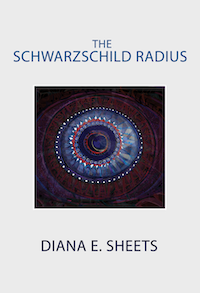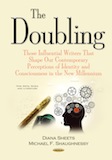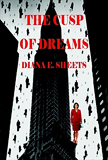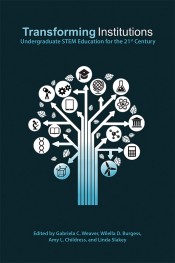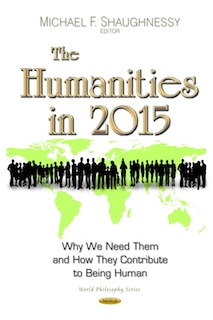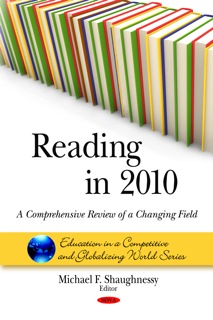Memoir As Lie
Copyright © 2005 Diana E. Sheets
To think of memoir in
Better yet, imagine “Jerry Springer—The Opera,” complete with tap-dancing members of the Ku Klux Klan and a chorus chanting four-letter obscenities. In this spectacle of the profane, its host—Jerry—is sent to hell where he is forced to confront the ruined lives of his former guests. The talk show was ideally suited for adaptation to opera, as Richard Thomas, the composer, pointed out. “It’s got tragedy. It’s got violence. There are people screaming at each other, and you can’t understand what they’re saying. It’s perfect for opera.” (
But the pièce de résistance of performance memoir to date was realized with the first season of Donald Trump’s television series “The Apprentice,” which premiered on NBC during the spring of 2004. It averaged an audience of twenty million weekly and obtained the largest market share of high-income viewers ever achieved thus far for a reality series. (Bill Carter, “ABC Under Disney: Kingdom, Yes. Magic, No., Micromanagement Leads to Missed Opportunities,” The New York Times,
“The Apprentice” is memoir di giorno in which sixteen contestants compete for a $250,000-a-year job with Mr. Trump. At the end of each episode, one prospective employee is fired in the corporate boardroom. But from the moment the cameras started panning the skyscrapers of
While the metastasis of sensationalized memoir—borne by language toward its intended prey, the American public—continues its migration from print to the screen, my focus in this essay will be on the printed word, not the visual manifestations of personal fictions realized in front of the camera. In the course of this essay, I will explore some of the means by which three literary writers, namely, Marcel Proust, Roland Barthes, and J.M. Coetzee, have sought to address some of the challenges inherent in writing autobiography. I will then examine how mainstream writer James Ellroy has applied some of these experimental methods in his memoir.
If, for the sake of argument, we analyze Marcel Proust’s In Search of Lost Time (1913-1927) from the perspective of autobiography, one of the principal difficulties of the genre becomes clear. As Roger Shattuck has noted in his study Proust’s Way, there is an inherent ambiguity in using I to convey the several different selves represented by Proust in the course of relaying his life story. First, there is the youthful Marcel, the protagonist, represented as I. Subsequently, there is the elderly Marcel, the narrator, who looks back on his life and is also referred to as I. Finally, we are given the literary persona of Proust, the author, also represented as I, who provides commentary on truth and reality as it pertains to the story. (W.W. Norton & Company, 2000, pp. 32-3)
Indeed, this concept of three distinct states of being—protagonist, narrator, and authorial commentator—has also been noted by a number of scholars including Roger Rosenblatt in his article “Black Autobiography: Life as the Death Weapon.”
Whatever else it may be, autobiography is the least reliable of genres—one person in relation to one world of that person’s manufacture, which is that person in macrocosm, explained and made beautiful by that same person in the distance, playing god to the unholy trinity. (Autobiography: Essays Theoretical and Critical, ed. James Olney, Princeton University Press, 1980, p. 169)
For many literary writers fashioning their life story, In Search of Lost Time has suggested another means of examining their lives, not as one constant, singular self whose story might be presented by means of a consistent linear narrative from beginning to end, but rather from the prospective of multiple selves emerging over the course of a lifetime, each potentially discontinuous from the rest.
To this end, one of the twentieth century’s most noted literary critics, Roland Barthes, sought to respond to the challenge posed by Proust. This he undertook in his autobiography Roland Barthes by Roland Barthes (1975). His book begins by instructing his readers to regard it “as if spoken by a character in a novel.” (Trans. Richard Howard, Hill and Wang, 1977, p.1) His autobiography contains both the visual (photographs) that constitute an “image-repertoire” and the textual (words) that form a written repertoire. (p.4.)
Roland Barthes by Roland Barthes is “novelistic” in style: fragmentary in its construction; representational, rather than realistic, in its depictions of characters; and episodic in contour, employing a “mode of discourse unstructured by a story.” (Roland Barthes, The Grain of the Voice: Interviews 1962-1980, trans. Linda Coverdale, Hill and Wang, 1985, pp. 222-3) Unlike In Search of Lost Time, which is anchored in past tense, Barthes’ story straddles past and present. It shifts from present to past and back again when describing his “image-repertoire” depending on whether the photos are considered as archival documents mediating events of the past or photographic images actively engaged with the text, which is always situated in the present. The result is autobiography in which images, thoughts, and memories struggle to float free of all encumbrances.
Roland Barthes by Roland Barthes is a critical study of the self striving for perpetual motion. Barthes refuses to confine his presentation to the first person singular. Nor is he content to restrict himself to the role of author when he might also preside as critic. Self-consciously, he attempts to recreate himself again and again. Barthes tries to avoid the pitfalls inherent in the creation of three states of I—protagonist, narrator, and author—realized in Proust’s In Search of Lost Time by presenting himself through continuous variations of the personal pronouns I, You, He, as well as the designation R.B., all the while theorizing and criticizing his own effort to transcend the trepan of autobiography. (Philippe LeJeune, “On Autobiography,” trans. Katherine Leary, Theory and History of Literature, Vol. 52, University of Minnesota Press, 1989, p. 44)
Through Barthes’ efforts to represent the self in a collection of ambiguous states, he attempts to create an anti-biography, a text that would serve as a wholly self-contained signifying system without reference to its creator. (See Paul John Eakin’s analysis in Touching the World: Reference in Autobiography, Princeton University Press, 1992, pp. 3-23)
I do not say: “I am going to describe myself” but: “I am writing a text, and I call it R.B.” . . . . I myself am my own symbol, I am the story which happens to me: freewheeling in language, I have nothing to compare myself to; and in this movement, the pronoun of the imaginary, “I,” is im-pertinent; the symbolic becomes literally immediate: essential danger for the life of the subject: to write on oneself may seem a pretentious idea; but it is also a simple idea: simple as the idea of suicide. (Roland Barthes by Roland Barthes, p. 56)
Thus, the “book of the Self” in resistance to itself becomes a book about language and its attempt to extinguish the author. (Eakin, Touching the World, pp. 6-8) But this effort at anti-autobiography falters, in part, due to the inclusion of “image-repertoire.” For the photographs and indeed the words used in conjunction with these pictures never succeed in displacing the author. Consequently, the likeness of his image becomes imbedded in the text just as his use of past tense to describe archival photographs, nevertheless, manages to insinuate itself into the present-tense, fragmentary discourse.
Nor is Roland Barthes entirely successful in eliminating himself by resorting to multiple personal pronouns and the textual reference of R.B. The reader—that obstreperous reader—never entirely concedes the ruse since Roland Barthes continually exerts a shadowy presence. The reader never forgets that the author’s hand is responsible for creating the words on the page. Consequently, protagonist, narrator, and author continue to make their presence felt.
This unholy trinity, posited by Proust and subsequently challenged by Barthes, remains one of the fundamental obstacles to be addressed today by writers intent on creating a self-conscious autobiography. For as the poet Paul Valéry noted, “The I calls itself I or you or he. There are these three persons in me. The Trinity. The one who addresses the I in the familiar ‘you’ form; the one who treats him as Him.” (LeJeune, “On Autobiography,” p. 31)
But the quest to write a veracious autobiography consists of more than the difficulty inherent in fashioning a single linear narrative from a multiplicity of selves. For the ruptures of time and the impact this has upon the individual may be seen as one of the root causes underlying these fractured identities. Paul John Eakin examines this truncated sense of self that occurs in autobiography as the writer reaches back over the course of a life to distill the key elements of character and story while at the same time stretching forward into the future to fix the structure of this identity. The result is a self-made existence, a creative act, rather than the rigor of an identity forged at birth that is absolute and constant throughout the course of a lifetime.
Thus the act of composition may be conceived as a mediating term in the autobiographical enterprise, reaching back into the past not merely to recapture but to repeat the psychological rhythms of identity formation, and reaching forward into the future to fix the structure of this identity in a permanent self-made existence as literary text. This is to understand the writing of autobiography not merely as the passive, transparent record of an already completed self but rather as an integral and often decisive phase of the drama of self-definition. (Paul John Eakin, Fictions in Autobiography: Studies in the Art of Self-Invention,
The third literary writer who has sought to respond to the challenge of telling his story that I will consider is J.M. Coetzee. He has been the recipient of both the Nobel Prize for Fiction (2003) and the first individual to receive
[But] what is truth to fact? You tell the story of your life by reselecting from a reservoir of memories, and in the process of selecting you leave things out . . . . So to call autobiography—or indeed history—true as long as it does not lie invokes a fairly vacuous idea of truth. (J.M. Coetzee, “Interview,” Doubling the Point. Essays and Interviews, ed. David Attwell,
Coetzee has sought to overcome this dilemma by writing his autobiography as he might his fiction, namely, in third person singular, present tense with each installment thus far—Boyhood (1997) and Youth (2002)—conceived as a separate, distinct story. (Derek Attridge, J.M. Coetzee and the Ethics of Reading, University of Chicago Press, 2004, pp. 143, 156-8) He seems to be making no claim as to the truth or authenticity of his autobiography. Instead, Coetzee shifts the focus of his quest from finding the truth or telling the truth to making the truth, that is, uncovering “the gaps and evasions, perhaps even the lies . . . [that are] elements of the life-story. . . .” (J.M. Coetzee, “Truth in Autobiography,” Inaugural Lecture, University of Cape Town, October 3, 1984, New Series No. 94, pp. 3-4) Nevertheless, he suggests that at the heart of this endeavor lies the sincerity of the writer who strives for self-knowledge in the writing of autobiography. (Influenced by Lejeune’s analysis in “The Autobiographical Pact” and “Autobiography in the Third Person,” Chapters 1 & 2 of his seminal work On Autobiography)
By writing Boyhood and Youth in the present tense, Coetzee appears to be responding to Alain Robbe-Grillet’s exhortation for a “new autobiography” that would be composed in the present, rather than concerned with the truthful rendering of events in the past. (See Eakin’s reference to the comments made by Alain Robbe-Grillet at a seminar held at the Ecole Normale Supérieure on May 18, 1985, Touching the World, p. 23) Coetzee’s use of tense in Boyhood and Youth is a de facto acknowledgment of the ascendance of the postmodernist perspective that “stops the march of time from past to an always privileged present.” (Mary Bittner Wiseman, The Ecstasies of Roland Barthes, Routledge, 1989, xiv) This approach in autobiographical writing has the advantage of giving the stories an experiential hue, reflecting how lives are lived, with neither foreknowledge nor hindsight.
Moreover, by having each volume represent a different state of being, Coetzee surmounts the difficulty Proust encountered when he chose the personal pronoun I to represent multiple identities while deftly side-stepping Barthes’ mechanistic strategy of utilizing the personal pronouns I, You, He, as well as the designation of R.B. to represent alternative selves.
Thus, we discover that Proust, Barthes, and Coetzee have all sought to grapple with the problems inherent in writing autobiography, chief among these is that of representing distinctly different states of being and how to respond to the challenge imposed by the disjuctures of time and its impact in the formation of identity. How, then, does one of
Before addressing this question, however, it is important to consider the chasm that presently divides fiction into two distinct classifications: literary and mainstream. The former is generally known for its highly complex narratives that exhibit a distinctive style, are intricate in structure, sophisticated in vocabulary, and characterized by stream of consciousness or interior thought. By contrast, mainstream fiction is often represented as an undistinguished, plot-driven story devoid of style, uncomplicated in structure, simple in vocabulary, and filled with dialogue and visual images that, at best, appear camera-ready for
Yet these divisions of high and low, literary and mainstream, are not as instructive as they may appear. I hope to demonstrate that Ellroy defies the mainstream classification to create a memoir that both borrows from and innovates beyond some of the methods employed by the three literary writers we have considered. Nor are his literary innovations confined to the telling of his personal story. His fiction, masculine and concise, brutal and frenetic, strips down language to the essentials, leaving only the barest shards, and yet his narratives are intricate in their plots and compelling as stories. Nevertheless, my focus here will be to examine a few of his groundbreaking methods employed in his memoir My Dark Places (1996), rather than consider in this essay the stylistic innovations pioneered in his fiction.
Because My Dark Places provides the reader with an overview of James Ellroy’s life, arguably it might be considered as either autobiography or memoir. However, given that it is about the impact his mother’s murder had on his development, it has been labeled as memoir. Ellroy’s method of presentation is in keeping with his “rat-a-tat-tat” narrative style. (Malcolm Jones, Jr., “Tracking Mommy: An author’s quest to find his mother’s killer,” Newsweek, November 11, 1996, Vol. 128, Issue 20, p. 79) Thus, he establishes the whereabouts of his mother’s body in the opening two lines of his story. “Some kids found her. They were Babe Ruth League players, out to hit a few shag balls.” (James Ellroy, My Dark Places, Vintage Books, 1997, p. 3)
By the eleventh sentence of his memoir, the murder investigation has begun. The first section of My Dark Places is presented in third person, simple past tense. James Ellroy does not appear as a character in this narrative until the bottom of page fourteen when he is described as he appeared to Sergeants Ward Hallinen and Jack Lawton, who are assigned to the case. “The victim’s son was pudgy, and tall for 10 years old. He was nervous—but did not appear in any way distraught.” (p.14) The chapter ends with the investigation sixteen-hours old and breathlessly underway.
Ellroy’s memoir is presented in the style and manner of his most compelling fictional crime tales. Yet, what is most striking about this story is that it is a memoir that maintains its focus not on the author but on the murder investigation of his mother, Jean Ellroy. The narrator’s story is but one of two major subplots of My Dark Places.
Unlike traditional autobiographies, which generally present the author’s birth and follow the sequence of that individual’s life by providing a consistent narrative that presents events in chronological sequence from beginning until nearly completion, Ellroy jumpstarts My Dark Places so that it opens at the critical juncture of his story, namely, the discovery of his mother’s body when he is age ten and the investigation that ensues.
Consequently, the memoir begins with what might be described in film parlance as the Inciting Incident, the event around which all other events in the story revolve. Indeed, in an interview, Ellroy concurred, “I’ve understood this to be the central event of my life.” (Steve Boisson, “Crossing the Divide: James Ellroy,” Fiction Writer, Spring 1997: 54)
But when did this Inciting Incident actually take place? The answer is provided in the final segment of My Dark Places when the reader discovers that Jean Ellroy’s murder and the subsequent investigation occurred thirty-five-years ago. By the time the memoir was published, another three years had elapsed. Yet how does Ellroy convey the circumstances of the remote past? The reader is presented with a gripping account of the investigation underway as if it had occurred only moments ago. Thus, the reader of My Dark Places is persuaded by Ellroy to regard a distant event as if it had just happened. Yet the point of view informing the reader is not that of a child, but rather that of a middle-aged man who has chosen to depict his story in the guise of one of his fictional crime tales.
Given that Ellroy has deliberately manipulated time and perspective in the opening passage of his memoir, how has he chosen to address these issues throughout My Dark Places?
At the start of each of the four segments and at the conclusion of My Dark Places, Ellroy inserts a short commentary that is written in present tense. Unlike the rest of his memoir where the story unfolds as if it were a fictional tale, the italicized portions clearly represent an authorial point of view. The tone is emotive, mawkishly sentimental, the antithesis of his typical hard-boiled narrative. However, these passages have the desired effect of acquainting the reader with Ellroy’s state of mind as he struggles to achieve closure in this, the defining event of his lifetime. The overall impression is that of an adult son endeavoring to shine a beacon of light toward his mother’s furtive shadow in hopes of discovering her. From this luminous source radiates his love, forgiveness, and empathy, despite his realization that her motives were, nonetheless, elusive, secretive, and, ultimately, destructive.
How, then, are time and perspective addressed throughout the remainder of the memoir? In the first of four sections, “The Redhead,” Ellroy presents the crime scene and the subsequent investigation. This is written in third person, simple past. Section 2, “The Kid in the Picture,” switches to a first person perspective, rendered in simple past tense. This portion of the memoir recounts Ellroy’s story from the time of his mother’s murder until he is thirty. By then he has sold his first novel and is trying to live his adult life. Section 3, “Stoner,” shifts back to third person, simple past. It is told from the perspective of fifty-three-year-old Sergeant Bill Stoner, who has spent fourteen years working homicides, the last seven years of which he has been assigned to the Unsolved Unit where he has been trying to solve, among others, the Jean Ellroy case. The final section of My Dark Places shifts again to first person, simple past, providing the reader with Ellroy’s most recent perspective provided in the memoir. He is now forty-six and has personally hired Stoner, who has just retired from the police force, to begin a new investigation into his mother’s murder. Despite new leads and additional information, the book closes without having identified, let alone convicted, the individual responsible for the crime.
Thus, time and perspective are presented in each of the four segments of My Dark Places from a distinctly different frame of reference. The murder investigation unfolds over and over and over and over again. The reader witnesses the uncovering of new information as the crime investigation is viewed from these perspectives, each with its own timeline. The weight of evidence shifts on each occasion. Nothing is absolute or determined. Section 4 concludes in the present with the murder investigation still actively underway.
The investigation continues.
Information on the case can be forwarded
to Detective Stoner either through
the toll-free number, 1-800-717-6517, or
his e-mail address, detstoner@earthlink.net
Finally, I would like to examine how Ellroy employs language to situate the reader in My Dark Places. Throughout his memoir he uses both fifties vernacular and present-day nomenclature to place the reader at the time and location of the story as it unfolds. Language is coupled with precise details—police procedural references and squad room slang—to authenticate time and setting. Thus, Section I, “The Redhead,” is concerned with the initial investigation of Jean Ellroy’s murder. Section II, “The Kid in the Picture,” presents James Ellroy’s perspective of these events as they unfold in the late 50’s in language reminiscent of vintage film noir. The principal suspect is referred to as “the Swarthy Man” and a woman whose murder resembles that of Jean Ellroy’s is characterized as “the Blond.” One of the opening phases “out to hit a few shag balls” immediately brings to mind a bygone era. In Section IV, “Geneva Hilliker,” however, as Ellroy brings the reader most nearly up to the present time, his language assumes a decidedly modern cast. Thus, he refers to his mother by her maiden name, Geneva Hilliker, rather than Jean Ellroy. The narrative quickens in pace and assumes the modern vernacular. “It was pure bullshit.” (p. 322) “I was dead-ass tired and speeding. Bill was fried. I knew he was running at a high RPM. (p. 414) When Ellroy flies out to
I flew out on Labor Day. The people on my flight were talking O.J. Simpson nonstop.
The case was three months old . . . . It was huge. It was epic performance art. It was a disingenuously staged multimedia circus based on the shaky premise of a botched hack-and-run job. Everybody knew O.J. did it . . . .
O.J. and the Swarthy
In conclusion, I have attempted to demonstrate that Ellroy employs in My Dark Places several of the methods pioneered by Proust, Barthes, and Coetzee in their autobiographies. Like Proust, he employs the three I’s—protagonist, narrator, authorial commentator—to offer three distinct selves at different junctures of his life. Like Barthes, he switches from myopic first person to the distancing third-person vantage point and back again, thereby providing the reader with dramatically different perspectives. Like Coetzee, Ellroy presents his autobiography as he might his fiction.
However, Ellroy’s story ventures further afield than Coetzee’s Boyhood and Youth. For Ellroy employs the past and present tense and juxtaposes different nomenclature from vastly disparate eras to evoke the distinctive historical tenor of those years. His continuous reworking of the timeline and events of the investigation is suggestive of today’s relativistic perspective while giving the reader a sense of the uncertainly that surrounds every crime case under investigation. Ellroy elects to begin telling My Dark Places not at his birth but rather at the time of the Inciting Incident that would define his life. Consequently, the reader is presented with a memoir that is multi-dimensional with each section spinning on its axis, volatile and precarious.
What emerges, as a result of these innovations, is a complex and compelling story that demonstrates why Ellroy stands heads-and-shoulders above so many of his contemporaries and why extreme caution should be exercised in rendering a judgment about the relative merits of high literary fiction as compared with its mainstream counterpart. For My Dark Places is a wonderfully inventive and evocative journey into the darkness of a tortured soul that ultimately ventures out of the void to salvage the writer and captivate the reader. It is a remarkable memoir likely to hold its own with the finest autobiographies.


